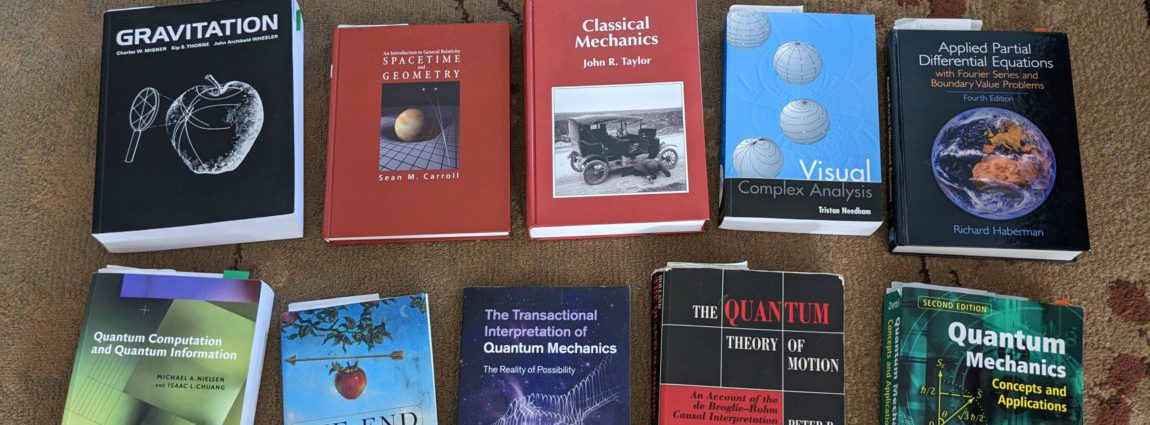For the past couple of years Mike and Tina taught a very simple introduction to quantum theory on Sunday afternoons in Portland. This was a free “community” class, the idea being to explain just the basics, using the simplest possible mathematical framework. This ends up being quantum theory in the “finite vector space” ![]() . The only prerequisite for the class was basic (High School) algebra, and much of the what was taught was actually an introduction to linear algebra (vectors and matrices).
. The only prerequisite for the class was basic (High School) algebra, and much of the what was taught was actually an introduction to linear algebra (vectors and matrices).
With this relatively simple mathematical framework it is then possible to quantitatively discuss quantum theory in a discrete setting, like that typically used for quantum information and quantum computing. Topics that can be covered include: Electron spin, Entanglement, Quantum Teleportation, and a simplified discussion of quantum correlations that violate Bell’s Inequality.
The hope is that this kind of information is useful to people who don’t have the time or background to take a college-level class in quantum mechanics, but who would like to go beyond what can be learned from the many popular books on quantum physics. Especially in terms of understanding why quantum physics
does not imply things like:
- An electron can be in two places at once
- An entangled pair of particles “communicate faster than the speed of light”
- You create reality when you perceive it
- “Entangled minds” could explain ESP
- Star Trek like teleportation has been achieved by quantum physicists
- … and so on.
We’re currently doing an informal “dry run” of the class here in Denver for a few people in the Physics Meetup Group, and this may possibly be followed by a more formal class.
Here is a copy of the notes. Somewhat updated, but unfortunately still far from being complete:
And here’s a snapshot of the class in August 2014:
It contains various PDFs and IPython notebooks. Unfortunately these represent only part of the material that was covered. Also, the notebooks use IPython 2.0, long before the Jupyter integration. You can still view them on nbviewer, although some of them look a bit weird. You can download them, but I don’t know how well they’ll run on a current IPython/Jupyter installation. If anyone is interested in doing anything further with these materials let me know, and I will assist if I can.
